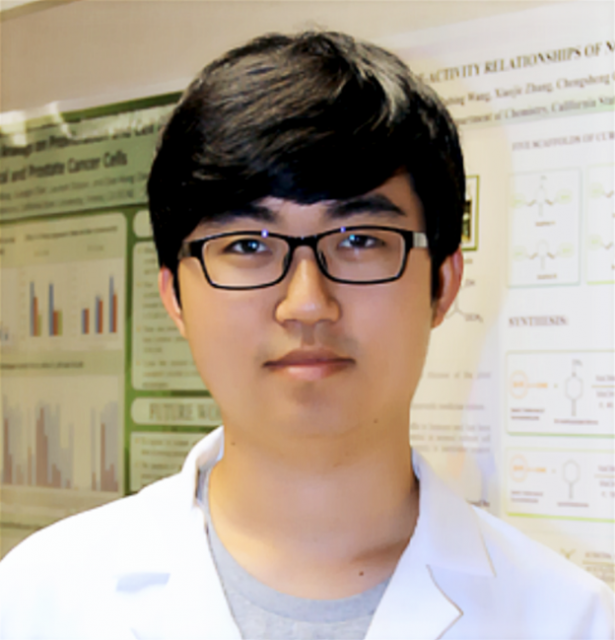Abstract: Aβ peptides are central to the pathogenesis of Alzheimer’s disease. Aβ peptides are highly aggregation-prone, making them challenging to prepare and purify. In the first part of the presentation, I will describe the development of an efficient method for the expression and purification of aggregation-prone amyloid-β (Aβ) peptides, including Aβ(M1-42), 15N-labeled Aβ(M1-42), and Aβ(M1-42) familial mutants.
In the second part of the presentation, I will describe the preparation of Aβ peptide with an N‑terminal cysteine [Aβ(C1–42)], the development of tailored chemical reaction conditions for the conjugation of aggregation-prone Aβ(C1–42) peptide with fluorophores or biotin, and the biophysical studies of labeled Aβ peptides.
In the third part of the presentation, I will describe the introduction of intramolecular disulfide bonds to Aβ peptides that stabilizes Aβ into an oligomeric state and the discovery of a disulfide-stapled peptide, AβC18C33, that forms homogeneous dimers and does not fibrilize.
When the COVID-19 pandemic forced the temporary closure of our laboratory in March 2020, our group began working on the structure-based drug design of inhibitors against the SARS-CoV-2 virus main protease. These efforts resulted in the design of a cyclic peptide inhibitor, UCI-1. In the last part of the presentation, I will present the structure-based design of the cyclic peptide inhibitor using free molecular modeling and docking software and publicly available X-ray crystallographic structures.
Speaker:
Institution:
Location:

